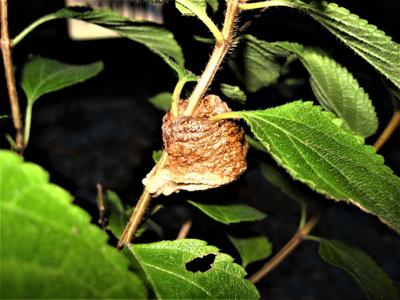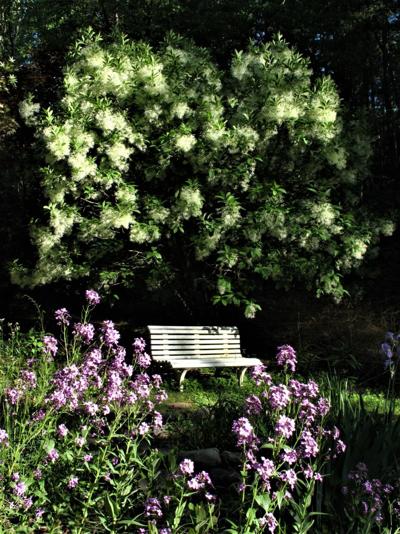Daily News-Record, September 9, 2022

By the end of September, White-tailed Deer in Central Virginia have changed from their beautiful summer coats of reddish brown to drab winter coats of brownish gray. By taking on the predominant colors of fall, winter, and early spring, deer are better able to blend in with their surroundings to evade detection by predators.
However, this is the best time of year for people to see male deer, which are known as bucks. Fall is the breeding season for deer, and bucks come out into the open more as they look for females (does) that are ready to breed. Although bucks are usually identified by the presence of antlers, a few does experience a hormonal imbalance that can cause the growth of small antlers.
Antlers are sometimes confused with horns, but they aren’t the same. Certain mammals, such as goats and cows, have horns that are composed of a bony core surrounded by keratin. Horns are permanently retained unless removed by humans or some other cause. Human fingernails, toenails, and hair are also composed of keratin, a substance made up of sulfur-containing fibrous proteins. There is no blood supply to keratin, and thus it is dead tissue.
Antlers, however, are completely bone and do have a blood supply while they are growing, and thus are living tissue. The blood is supplied by a network of vessels
in the skin covering the antlers. This skin is known as “velvet” because of how it looks and feels.
The lengthening hours of daylight trigger antler growth in spring and growth continues until the shorter days of fall. At this time, a hormonal imbalance occurs which causes the blood supply to the antlers to be cut off. The velvet dies and peels away. If you see dark red or black strands hanging from a buck’s head, you are looking at the velvet.
The antlers have mineralized and hardened by this time, yet bucks only keep their antlers for a few more months. They probably use them more as a sexual attractant for females than for fighting off other male deer or predators.
The size of a buck’s antlers, or rack, is influenced by heredity, nutrition, and age. Genes play a big role in determining the shape of the rack. Nutrition, and to some extent genes, govern the ultimate size of the antlers, with a well nourished deer producing a larger rack than a nutritionally deficient one of the same age.
Bucks build body mass rather than antlers the first two years of their lives, and thus their first two sets of antlers are small. From then, until the prime of their lives at about five and a half or six and a half years of age, each successive rack is larger than the previous year’s if the deer have adequate forage. If a buck lives longer than this (few live beyond four or five years), its rack will decrease in size with each succeeding year.
Bucks are beautiful animals, so keep your eyes open!
Marlene A. Condon is the author/photographer of The Nature-friendly Garden: Creating a Backyard Haven for Plants, Wildlife, and People (Stackpole Books; information at www.marlenecondon.com). You can read her blog at https://InDefenseofNature.blogspot.com










You must be logged in to post a comment.